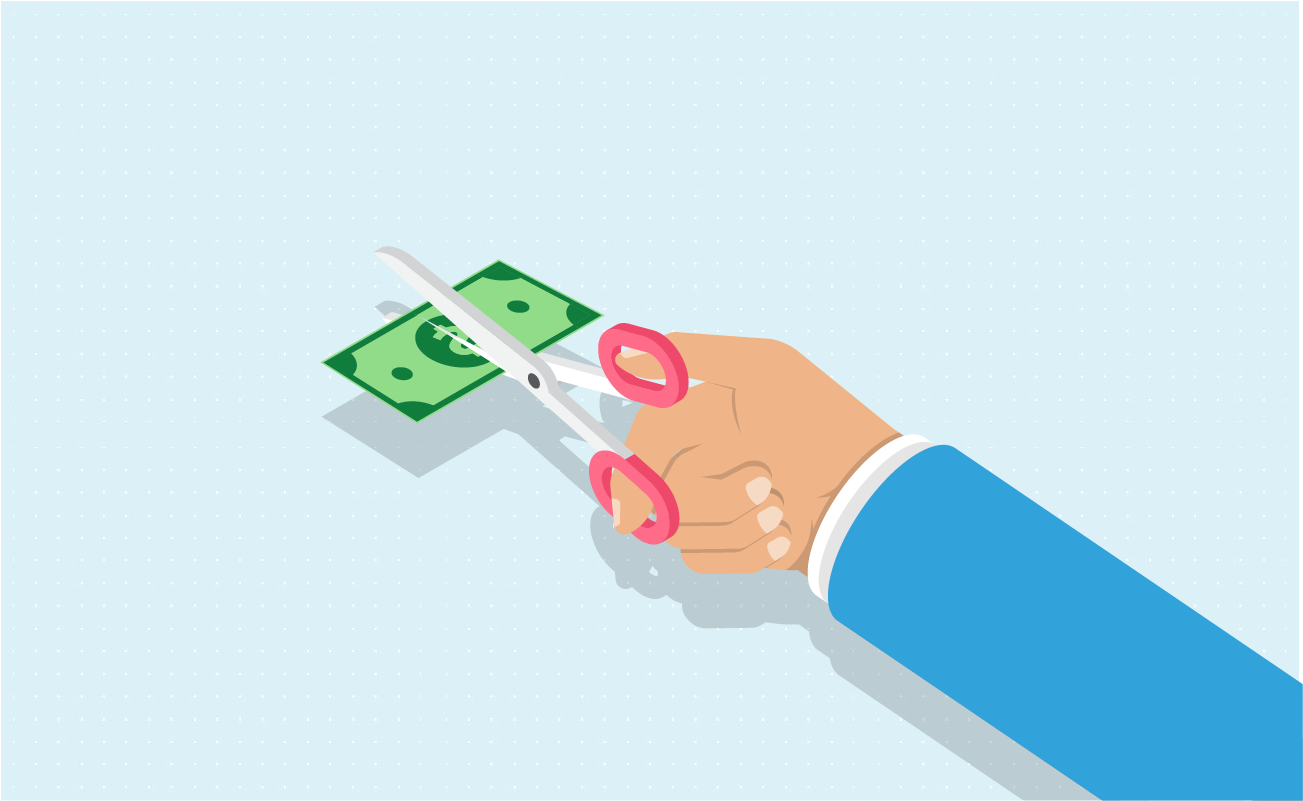 Long-Distance Call Cost Calculator
Long-Distance Call Cost CalculatorThis calculator helps people calculate the average cost per minute for a number of phone calls including state and federal taxes based on the actual cost per minute or a calculated average cost based upon the bill amount. Enter calls below along with the total bill amount. You can also use this tool to figure out the cost of future international calls based on prior billing by using the built in on-page timer.This page can be saved to the local hard drive to deliver calculation results even if you are not connected to the Internet.
Guide published by Jose Abuyuan on February 11, 2020

We live in an increasingly connected world. Technology straight from science fiction dominates our lives. Welcome to the Age of the Datapad. Or, as we now call it, the smartphone.
Almost everyone and their grandma has a phone these days. Society evolved to cater to smartphone users as smartphone usage becomes more ubiquitous. Today, calling one another isn't the only thing we do with our phones. Some of the things we do include the following:
People still debate whether this increased connectivity has improved or soured our lives. What we do know is that phones are a necessity in modern living. We use them so often that they have the potential to be a draining part of our everyday budgets.
Mobile phone usage has always been a pricey proposition. In 2012, the American cell phone bill was around $41. However, many subscribers to major carriers paid twice that amount. You'd be hard pressed to find a phone plan that matches the average at the time. In addition, the units themselves could cost the users another $70 per month.
This average didn't come from the big providers. Instead, it derives from the growing popularity of alternate providers and plans. Time Magazine noted that the sale of prepaid phones grew to about 91 percent around 2012.
In 2018, the average phone bill rose up to $80. Six years made a world of difference.

Things get complicated for your phone bill when you factor in your family. Just as you likely did when you were a teen, your teenage children are likely glued to their phones. If you don't put a cap on their use, they might end up accruing a massive phone bill, often unwittingly.
There's no need to deny them their smartphone privileges, of course. Instead, use this as an opportunity to teach them responsible phone use. Set useful guidelines to help them manage their phone habits. Encourage them to use free Wi-Fi for their mobile internet needs and to turn off mobile data when they're at home.
Finally, consider giving them a prepaid phone line. This wouldn't just put a cap on how much they can spend but teach a priceless lesson on the value of money. They would think twice about their extensive phone calls if they couldn't always afford them.
The charges on your monthly cellphone plan might exceed the number advertised. A few factors contribute to this cost:
You can remove the last two charges from your phone bill with relative ease. Set up an alert to notify you when you approach your data limit. This will help prevent overage and keep you in the black. If you have a lot of overage charges, you might need more minutes than your current plan is offering. Consider upgrading your data plan. This may be cheaper than the accumulated costs of the overage charges you get every month.
Taxes are inevitable. Factoring their costs, however, can give you a good idea of how much your plan truly costs. This can come in handy when comparing carriers. Some providers, such as Cricket and T-Mobile, roll the cost of taxes into their monthly charge. A $80 plan with T-Mobile will cost exactly $80. In contrast, comparative $80 plans from providers like Verizon will be much more expensive.
Home Wi-Fi and phone plans often come in bundles. These have come under fire from consumers. Although it seems like a good deal on the surface, looks can be deceiving. Often, buying a bundle means you overpay for services that you could've had for much cheaper.
You might think that you're paying to get all your services in one accessible package. And for some people, it is. Your bill for Internet, phone, and cable TV might be lower if you got them from the same provider. And this isn't much of an issue if you use most or all the services.
Sometimes, the extra bells and whistles that bloat up the price go unused. After all, if you've subscribed to Netflix, HBO Go, and Disney+, do you need that cable TV plan? The same can be said for phone plans and their other features.
To find out if a bundle service is right for you, examine its individual components. What is the big difference between the bundle and the sum of all its parts? Is getting the parts you need worth the premium you pay? How often do you use the other features, and are they worth trying out?
Too many people today want to be the first in their circle to have the latest iPhone. And unless you're rich, you usually can't afford to buy one out of pocket. Thus, you usually get phones from a plan that comes with your preferred phone model. You might even be tempted to buy a costlier plan because it offers the phone model you want.
The steep price of smartphone ownership can also cost you an arm and a leg. A Fox Business looks at how your costs would add up if you upgraded your phone every 32 months. If you bought your first $567 phone at age 18, you would have spent $12,474 on phones by the time you turn 78. Just imagine the cost if you paid for a premium phone every 12 months!
Plans can cut down the upfront cost of a new phone. Rather than paying $600 up-front, you get the unit immediately for the cost of the plan. It comes, however, with a hefty monthly price tag and a contract that could last for up to three years. And you can't cancel lest you incur punitive fees. For finance writer Dave Ramsay, these fees are just another debt.
Consider reining in your need to have the best and the latest phones. Find a good-quality phone and stick with it for as long as you can. Many phones can remain functional for at least four or six years when well maintained. Rarely are you forced to upgrade, and that's usually when your phone's OS is no longer supported.
The data below assumes you switch phones every six years.
| Age | Total Phone Costs |
|---|---|
| 18 | $567.00 |
| 24 | $1,134.00 |
| 30 | $1,701.00 |
| 36 | $2,268.00 |
| 42 | $2,835.00 |
| 48 | $3,402.00 |
| 54 | $3,969.00 |
| 60 | $4,536.00 |
| 66 | $5,103.00 |
| 72 | $5,670.00 |
| 78 | $6,237.00 |
Delaying an upgrade by six years helps you slash your lifetime cellphone costs by half. This might not be the most stylish option, but it is the most frugal.

Because our shiny toys cost so much when new, we are tempted to get them insured. But phones are a declining investment and have a limited life span. The costs of paying for major phone repairs out of pocket may be cheaper than phone insurance.
As costly as cellphones can be, they don't hold a candle to long-distance telephone calls. In ye olden days, a long-distance telephone call is a rare occurrence due to the charges involved.
In a country the size of the U.S., domestic long-distance calls can be pricey. State-to-state calls can cost up to 10 cents per minute. Because of taxes, long-distance calls within the state are even more expensive! Calls to people outside the country can vary in cost depending on the nation. Don't be surprised if you're charged about $1.40 per minute.

The Internet eliminated one of the barriers for real-time long-distance communications. And this has gone beyond chatrooms. Voice-over IP calls (VoIPs) made long-distance chats possible. With the right programs and a webcam, you can even schedule interviews through VoIP.
Most VoIP programs offer their services for an affordable price. A few services even offer it for free. In both cases, your biggest expense would be the cost of the Internet connection. Programs like Skype also offer premium services that lets users contact people through their phone numbers.
The data below was sourced from FitSmallBusiness.com. It examines the typical VoIP costs to some of the most common calling destinations for U.S. businesses. For most services, Canada and the U.S. territory of Puerto Rico do not incur extra charges to their subscriptions.
| Country | Phone.com | Ooma | Nextiva | RingCentral | 8×8 |
|---|---|---|---|---|---|
| Mexico | 3.9 cents/min. | Included | 1.6 cents/min. | 1.2 cents/min. | Included |
| Australia | 3.9 cents/min. | 3.8 cents/min. | 3 cents/min. | 3.9 cents/min. | 3 cents/min. |
| Brazil | 3.9 cents/min. | 6.4 cents/min. | 3 cents/min. | 7.8 cents/min. | 25 cents/min. |
| China | 3.9 cents/min. | 2.5 cents/min. | 6 cents/min. | 3.9 cents/min. | 2 cents/min. |
| Colombia | 4.3 cents/min. | 8.9 cents/min. | 2.4 cents/min. | 1 cent/min. | 6 cents/min. |
| Dominican Republic | 5.5 cents/min. | 5 cents/min. | 8 cents/min. | 1.6 cents/min. | 13 cents/min. |
| France | Included | 2.2 cents/min. | 2 cents/min. | 3.9 cents/min. | 4 cents/min. |
| Germany | Included | 2.2 cents/min. | 2 cents/min. | 3.9 cents/min. | 12 cents/min. |
| India | 3.9 cents/min. | 2.9 cents/min. | 9 cents/min. | 5.9 cents/min. | 6.5 cents/min. |
| Israel | Included | 2.5 cents/min. | 2 cents/min. | 11 cents/min. | 1 cent/min. |
| Japan | 3.9 cents/min. | 4.3 cents/min. | 5 cents/min. | 3.9 cents/min. | 7 cents/min. |
| Puerto Rico | Included | Included | Included | Included | 3 cents/min. |
| South Korea | 3.9 cents/min. | 6 cents/min. | 2 cents/min. | 4.2 cents/min. | 3 cents/min. |
| United Kingdom | Included | 2.8 cents/min. | 5.8 cents/min. | 3.9 cents/min. | 2.6 cents/min. |
| Canada | Included | Included | Included | Included | Included |
While VoIP reduces the cost of making voice calls, it is not without its limitations. To be effective, it needs both parties to have a stable and fast internet connection. Much like instant messaging, it also requires many users to use the same program.
Telecommunications is an indispensable part of modern life. Like other necessities, its costs can be lowered by making intelligent spending decisions. Fortunately, phone bills are easy to slash without a noticeable impact on your lifestyle. Most of the time, you're paying for the same service for less.
A little comparison can go a long way. Sometimes, all it takes to find a good deal in your phone bill is to compare each available plan. Tailor your selection based on your needs and avoid buying into extraneous features. A good basic phone plan, for instance, should give you enough minutes and data to meet your everyday needs. Consider upgrading only if your needs change. If you rarely make calls, a cheaper plan makes better sense.
Other considerations include service quality. Signal coverage is crucial to making the most of your phone plan. A lack of cell service renders any of your minutes and data useless. The larger carriers like AT&T and Verizon are usually better options coverage-wise.
Prepaid services provide a cost-effective alternative to the contract plans of the big carriers. For carriers like Ting, you also get to tailor your plan according to your needs, rather than choose from a bundle.
The table below weighs in on contract vs. prepaid and no-contract cellular plans.
| Pros | Cons |
|---|---|
| Contract plans have better overall coverage across the country. | They tend to be expensive. |
| They are often prioritized by their provider during times of network congestion. | Plans cannot be customized. You may be straddled with add-ons you don't need. |
| A large family plan that covers many phones can be cheaper than its equivalent in prepaid phones. | You must commit to a contract plan for a set number of years, usually between two and three. |
| These plans cover the cost of a phone. This makes it less expensive to upgrade phones up-front. | You don't have a lot of freedom to choose your preferred phone models. |
| Contract plans usually have better customer service. |
| Pros | Cons |
|---|---|
| They are much cheaper than contract postpaid plans and let you use only the minutes you need. They don't charge as many extra fees. | They have less network coverage. There are times when they do not have the same coverage that contract subscribers do. |
| You have the freedom to choose any phone model you please. | You must pay for your own phone at full price. |
| Prepaid plans do not need credit checks to qualify, which are great for people in a bind. | They often have less-than-stellar customer service. |
| These plans are flexible. They allow you to pay for phone service as needed. | They are not as prioritized by their carriers during network congestion. |
| Prepaid and no-contract plans use unlocked phones. You can switch carrier SIM cards without a worry. | You have limited mobile data, which can be problematic if you use a lot of it. |
Services like Ting work well for users who use phones solely for texting and calls. Prepaid and no-contract plans also make excellent phones for people who like to travel. However, it does poorly for data-heavy users. Meanwhile, people who use a lot of mobile data would benefit the most from a postpaid contract plan.
Unlimited data plans have their ups and downs. For starters, they are not really “unlimited.” Their caps are much higher than the normal data plan, that much is true. But how much it does exceed can vary.
For some, charges by the gigabyte might be reasonable enough to justify their costs. However, others don't need that much data. Sometimes, the limitations on the data usage renders them less optimal. Many unlimited data plans put a cap of about 22 gigabytes.
The right choices can help you cut down on your bill without thinking about it. Automating bills payment, for instance, is a good idea. Many carriers already incentivize payment automation through discounts. Seize these savings and take some of the hassle off your finances.
Switching between carriers might be a workable option, but only if it is timed right. If you're in a contract plan, wait until your contract expires to avoid termination fees. If you bought a phone through your carrier, put off the switch until you've paid for the phone in full.

Sometimes, you can cut down on your phone bills by paying attention to your usage. Try to avoid doing bandwidth-guzzling activities while on the go. Keep downloads and video streaming to places with free Wi-Fi. Restrict the amount of times phone apps like Instagram have access to background data.
Using free Wi-Fi whenever possible can cut down on the times you use mobile data when you're not home. Be sure to pay attention to your phone to make sure that cellular data plans are used only when you need them.
You'd be surprised at how often people overestimate their exact telecommunications needs. Avoid the temptation to take on more data than you need. Assess what you use your phone for. A prepaid option might be good if you never use your phone for anything other than making calls.
Jose Abuyuan is a web content writer, fictionist, and digital artist hailing from Las Piñas City. He is a graduate of Communication and Media Studies at San Beda College Alabang, who took his internship in the weekly news magazine the Philippines Graphic. He has authored works professionally for over a decade.